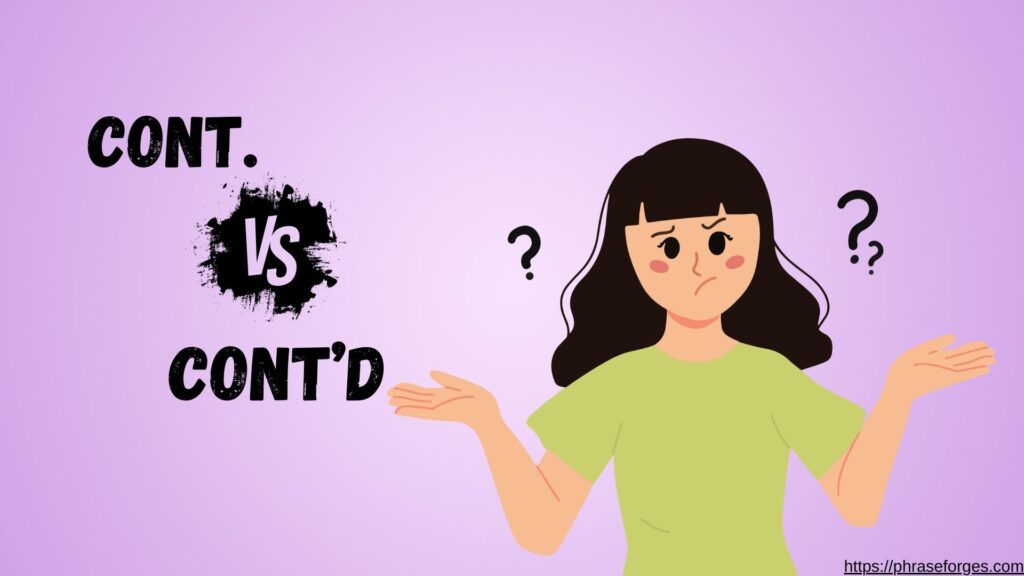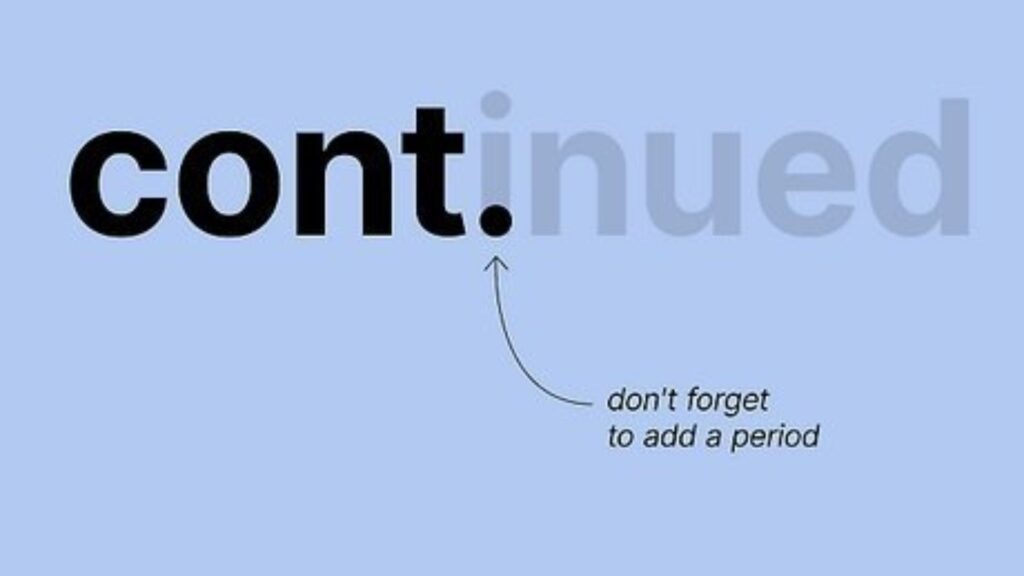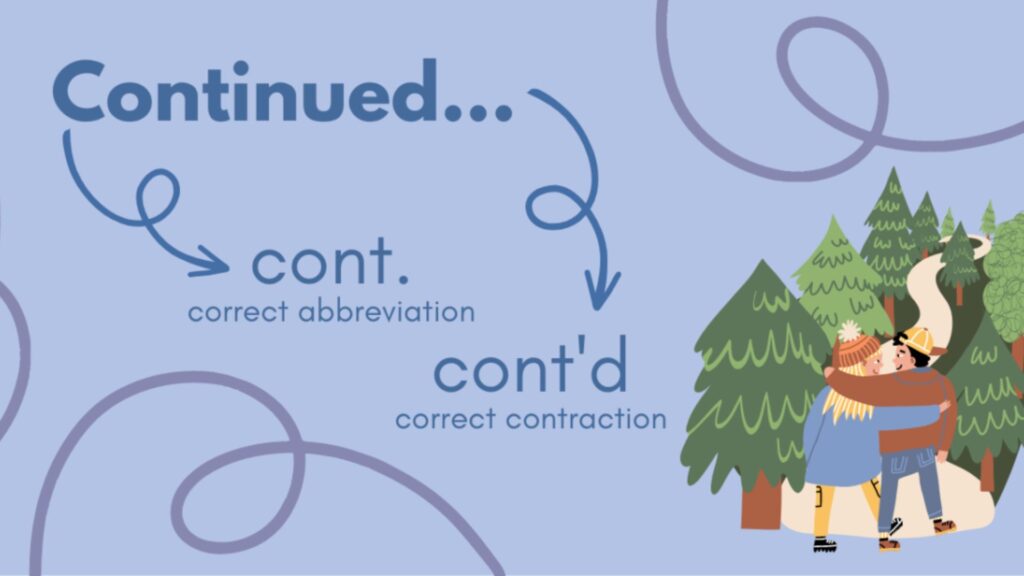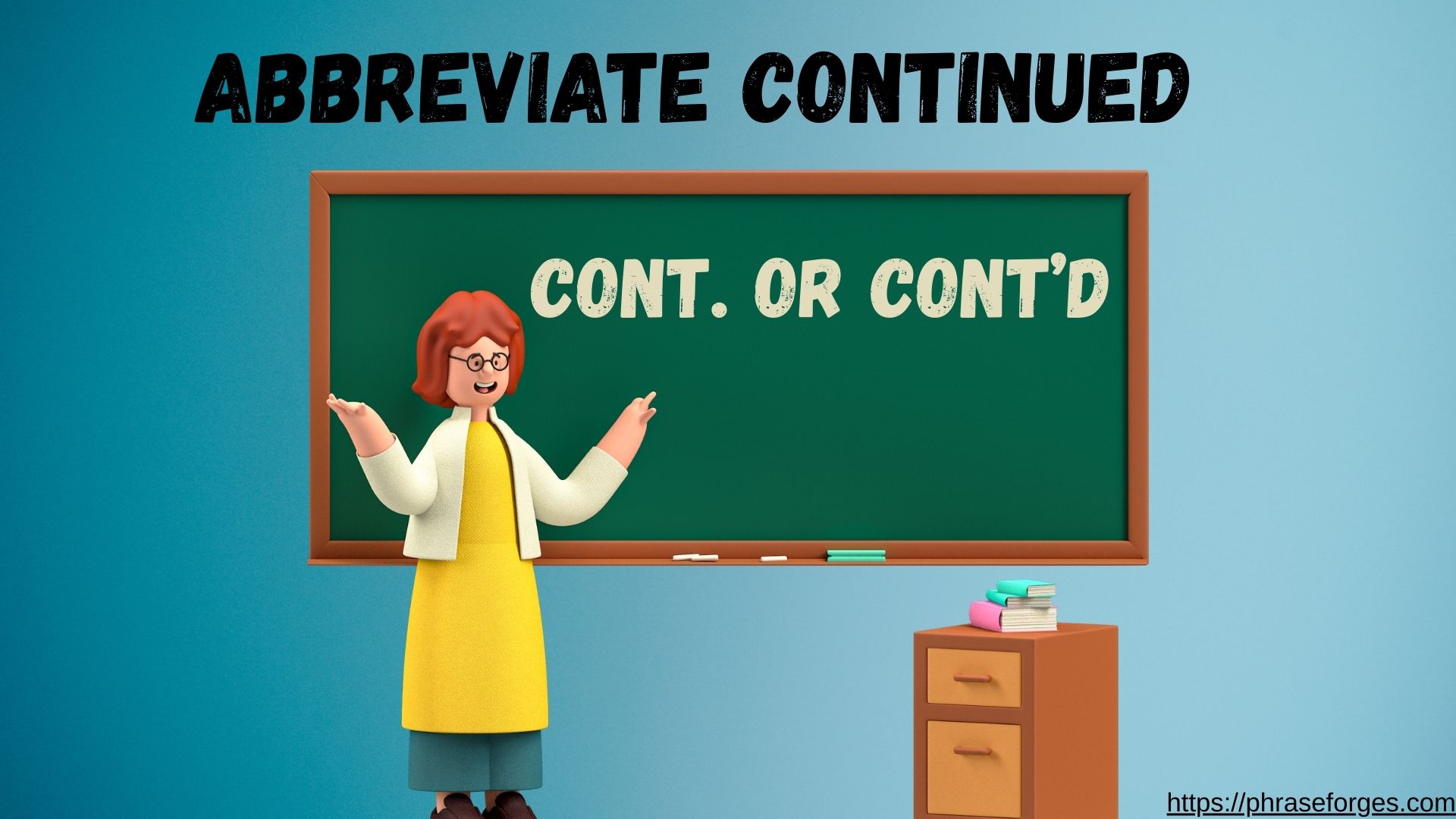What’s the Best Way to Shorten “Continued”?
You’ve probably seen both “cont.” and “cont’d” used in writing. Maybe it was in a meeting agenda, a report, or even at the bottom of a page in a novel. So, which one is correct? Can you use either? Or does it depend on the context?
Let’s break it down, not just by grammar rules but with real-life writing examples, insider tips, and the kind of guidance you’d get from a seasoned editor. By the end, you’ll know exactly how to abbreviate continued without second-guessing yourself.
Cont. vs. Cont’d – What’s the Difference?

The difference between “cont.” and “cont’d” boils down to grammar mechanics.
- “Cont.” is a truncated abbreviation, which means letters are chopped off from the end.
- “Cont’d” is a contracted form, meaning internal letters have been omitted and replaced with an apostrophe.
Let’s look at them individually.
When to Use “Cont.” – The Truncated Abbreviation
Cont. is the more formal, widely accepted abbreviation of continued, especially in print formats like:
- Books
- Academic papers
- Reports
- Page headers and footers
It ends with a period, signaling that it’s an abbreviation. According to the Chicago Manual of Style, which is a trusted authority in publishing, “cont.” is the preferred form when shortening “continued.”
✅ Example:
Page 4
Table 1: Revenue Forecast (cont.)
This format is clean, formal, and ideal for manuscripts or documents where pages break mid-sentence or mid-section.
📧 Email Scenario:
Subject: Q2 Report Attachments (cont.)
Email Body:
Hi Melissa,
Please see attached files. Due to size limitations, the report has been split. This is Part 2 of the Q2 Report (cont.), with financial breakdowns.
Best,
Eric
Why it works: In the subject line and the body, “cont.” signals that this is a continuation of a previous message or file. It’s simple, clear, and professional.
When to Use “Cont’d” – The Contracted Abbreviation
On the flip side, “cont’d” is a contraction. It uses an apostrophe to represent the omitted letters (“inue”). This form is less formal, but still grammatically correct. It’s often seen in:
- Meeting notes
- Casual reports
- Dialogue or narrative text
- Personal communication (e.g., emails, messages)
It adds a slightly conversational tone, making it great for informal writing.
✅ Example:
“The meeting cont’d after lunch with a discussion on marketing strategy.”
📧 Internal Memo Example:
Subject: Monday Staff Meeting (cont’d)
Memo Body:
Hey Team,
The brainstorming session from Monday cont’d into Tuesday, and we covered additional points on outreach. Notes are updated in the shared doc.
Cheers,
Tasha
Incorrect Usage to Avoid

Let’s clear up a few common mistakes. Even though both forms are valid, punctuation is key. Missing an apostrophe or a period can make the abbreviation incorrect or just look sloppy.
| Incorrect | Why it’s Wrong |
|---|---|
| cont | Missing period (for truncated form) |
| contd | Missing apostrophe (for contraction) |
| continued. | If abbreviated, don’t keep the full word + period |
| Contd. | Mix of contraction and truncation confusing style |
✅ Study Tip:
If it’s “cont.”, always end with a period.
If it’s “cont’d”, don’t forget the apostrophe.
How to Choose the Right One
Here’s a simple guide to help you decide:
| Context | Use “cont.” | Use “cont’d” |
|---|---|---|
| Formal documents | ✅ | ✖ |
| Digital slides or headers | ✅ | ✖ |
| Emails (internal, casual) | ✅ | ✅ |
| Dialogue or narrative | ✖ | ✅ |
| Academic papers | ✅ | ✖ |
So if you’re writing a business report or article, go with cont.
If you’re jotting down casual notes or storytelling, cont’d adds a human touch.
What Do Style Guides Say?
Let’s consult the experts. According to the Chicago Manual of Style, “cont.” is the standardized form for abbreviating “continued,” especially in publishing and academic contexts. Most formal writing abbreviations follow this pattern: truncate and end with a period.
While “cont’d” isn’t banned, it’s not typically recommended in professional or academic style guides unless the tone of the piece is informal or conversational.
Usage in Digital Formats
In modern digital formats, where text isn’t broken across pages, the need to abbreviate “continued” has decreased. But it still appears in emails, threaded messages, or PDFs where segmentation happens.
Example:
“(Cont’d in next slide)” in a PowerPoint deck.
Or
“(Cont. on page 6)” in a multi-part downloadable report.
Common Questions Answered
❓Is “contd” a correct form?
No. That’s a misspelling. It’s either “cont.” (with a period) or “cont’d” (with an apostrophe). Leaving off punctuation makes it look careless.
❓Which is more professional cont. or cont’d?
Cont. is more professional. It follows standard abbreviation punctuation rules and is recognized in formal writing.
❓Can I use “cont’d” in an academic paper?
Avoid it. Stick with “cont.” unless you’re quoting a casual source.
Final Thoughts: Picking the Right Abbreviation of Continued

When in doubt, default to “cont.” it’s clean, proper, and aligns with most style guide rules on abbreviations. Use “cont’d” when your writing tone allows for a contracted, more conversational style.
Both serve a purpose. The key is to match the abbreviation to the medium and the tone.
Quick Recap Table: Continued Abbreviation Usage
| Abbreviation | Type | Best For | Punctuation Required |
|---|---|---|---|
| Cont. | Truncation | Formal reports, documents, headers | Period (.) |
| Cont’d | Contraction | Casual emails, dialogue, informal notes | Apostrophe (’) |
In Summary
Whether you’re prepping a meeting agenda, editing a document, or sending a follow-up email, knowing the correct way to shorten “continued” can elevate the clarity and polish of your writing. Just remember:
- Use “cont.” when you want to keep it clean and professional.
- Use “cont’d” when the tone is light and conversational.
- Don’t forget your punctuation that little dot or apostrophe makes all the difference.

